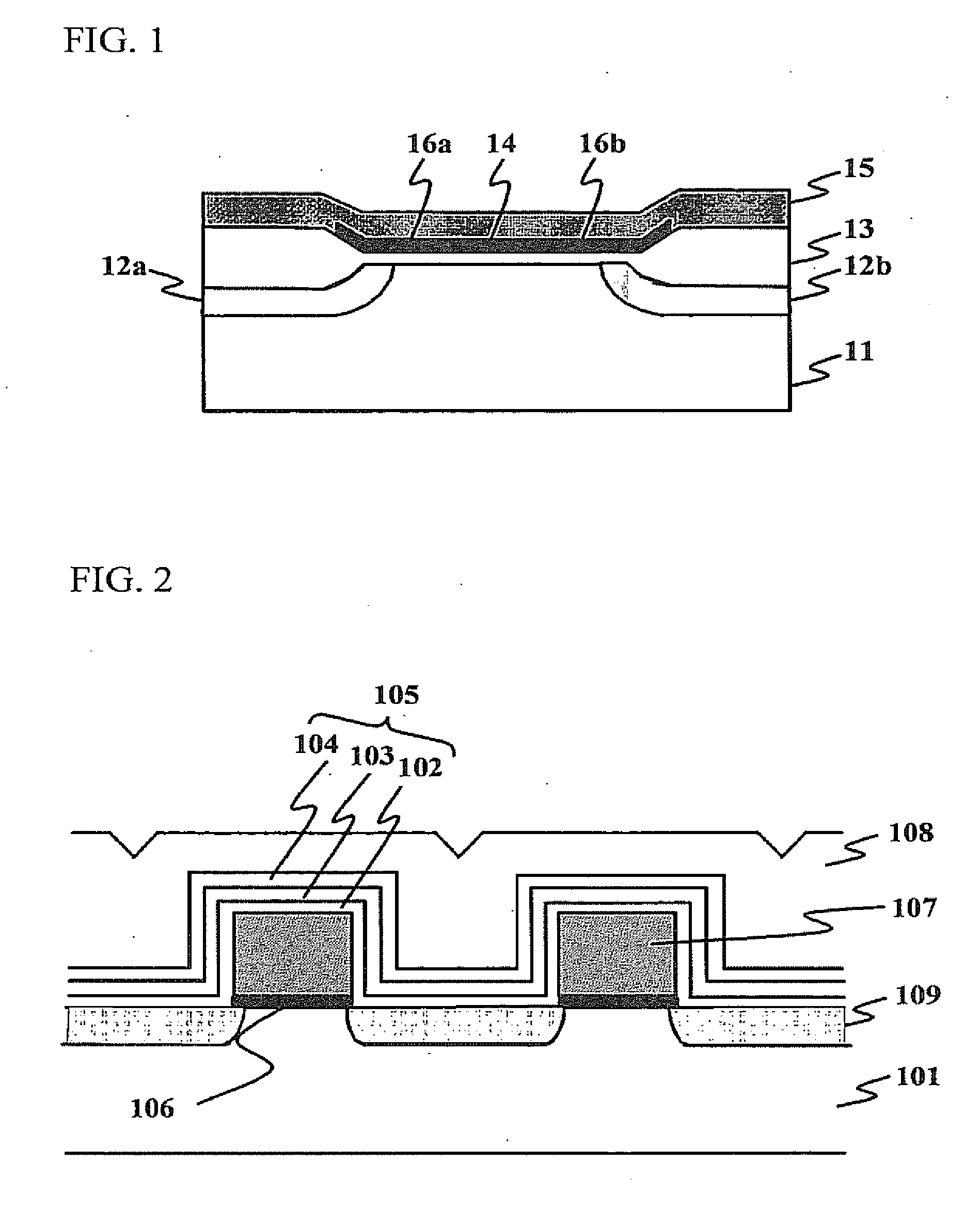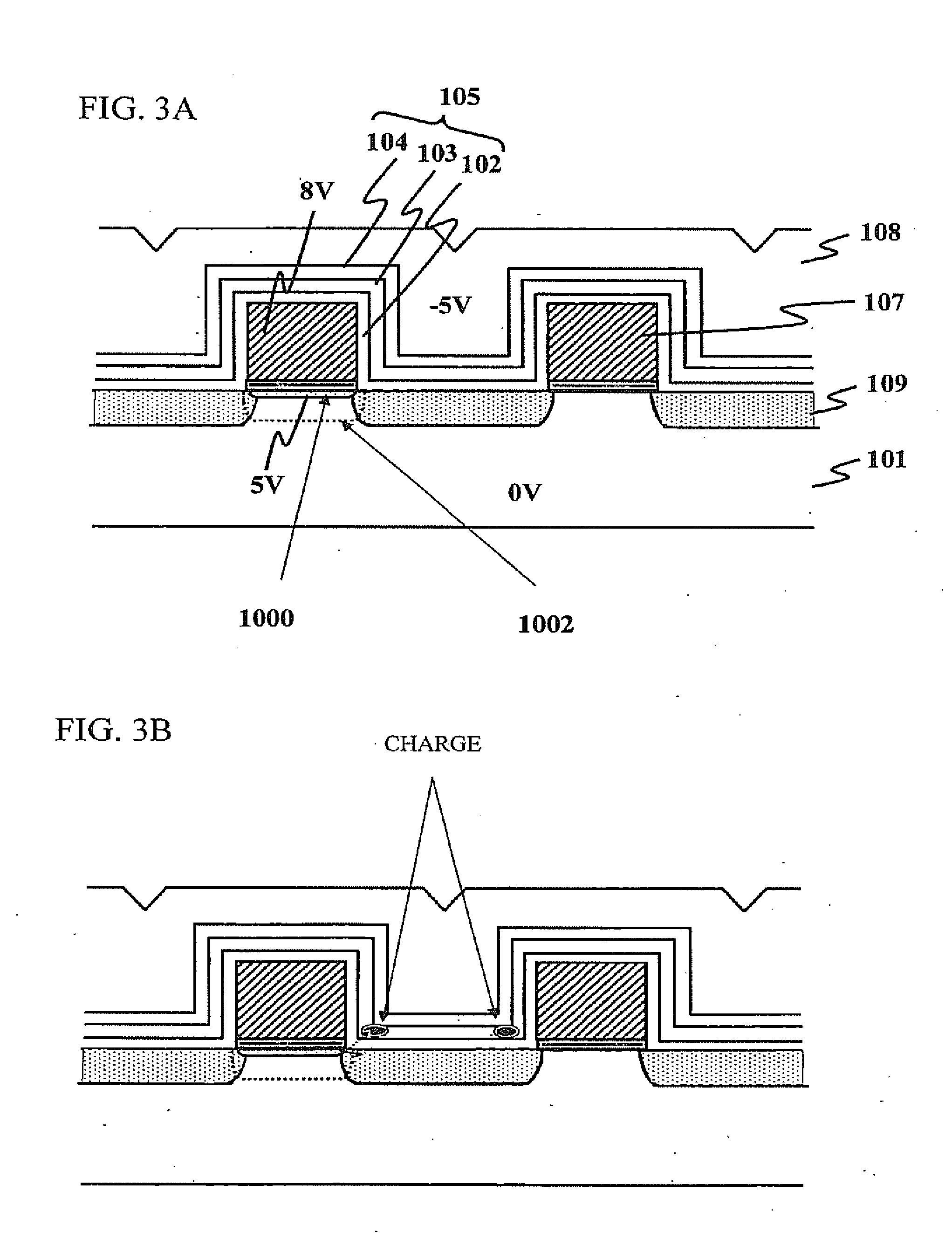Non-volatile sonos-type memory device
a memory device and non-volatile technology, applied in the field of semiconductor devices, can solve the problems of difficult to reduce a cell portion, increase in manufacturing costs, and limit the design of flash memory with floating gate technique, and achieve the effect of easy data erase and high data retention characteristics
- Summary
- Abstract
- Description
- Claims
- Application Information
AI Technical Summary
Benefits of technology
Problems solved by technology
Method used
Image
Examples
first embodiment
[0079]In the present embodiment, there is provided an ONO structure in which a tunnel oxide film, a storage nitride film, and a top oxide film are sequentially laminated. This ONO structure is formed after the assist gate is formed, and there is not provided a sidewall on a side wall of the assist gate.
[0080]FIG. 2 is a view illustrating a cross-sectional view of the memory cell in accordance with a first embodiment of the present invention. In this figure, a reference numeral 101 represents a semiconductor substrate, a reference numeral 102 represents a tunnel oxide film, a reference numeral 103 represents a storage film of silicon nitride film, and a reference numeral 104 represents a top oxide film provided on the storage film 103. A laminated structure of the tunnel oxide film 102, the storage film 103, and the top oxide film 104 forms an ONO structure 105. As described above, both the tunnel film 102 and the top film 104 are configured to be oxide films having thicknesses at le...
second embodiment
[0087]In regards to the next embodiment, there is provided the ONO structure in which the tunnel oxide film, the storage nitride film, and the top oxide film are sequentially laminated. This ONO structure is formed after the assist gate is formed, and there is not provided a sidewall on a side wall of the assist gate. In addition, the surface region of the semiconductor substrate is cut out in a U shape between the assist gates.
[0088]FIG. 13 is a cross-sectional view illustrating a-memory cell in accordance with a second embodiment of the present invention. In this figure, the same components and configurations as those of FIG. 2 have the same reference numerals. Also in the second embodiment, both the tunnel film 102 and the top film 104 are configured to be the oxide films having thicknesses equal to or greater than 4 nm, which is equal to the thickness of the FN tunneling region.
[0089]In the second embodiment, there is provided the U-shaped cutout between the assist gates adjacen...
third embodiment
[0094]In the next embodiment (the third embodiment), there is provided the ONO structure in which the tunnel oxide film, the storage nitride film, and the top oxide film are sequentially laminated. This ONO structure is formed before the assist gate is formed, and there is not provided a sidewall on a side wall of the assist gate.
[0095]FIG. 22 is a cross-sectional view illustrating a memory cell in accordance with a third embodiment of the present invention. In this figure, the same components and configurations as those of FIG. 2 have the same reference numerals. The assist gate 107 is formed on the ONO structure 105, which is formed on the surface of the semiconductor substrate 101. A reference numeral 111 shown in this figure is an insulating film formed on the top and side walls of the assist gate 107.
[0096]In this configuration, the tunnel oxide film 102 included in the ONO structure 105 also serves as a gate insulating film of the assist gate 107. Here, both the tunnel film 10...
PUM
 Login to View More
Login to View More Abstract
Description
Claims
Application Information
 Login to View More
Login to View More - R&D
- Intellectual Property
- Life Sciences
- Materials
- Tech Scout
- Unparalleled Data Quality
- Higher Quality Content
- 60% Fewer Hallucinations
Browse by: Latest US Patents, China's latest patents, Technical Efficacy Thesaurus, Application Domain, Technology Topic, Popular Technical Reports.
© 2025 PatSnap. All rights reserved.Legal|Privacy policy|Modern Slavery Act Transparency Statement|Sitemap|About US| Contact US: help@patsnap.com



